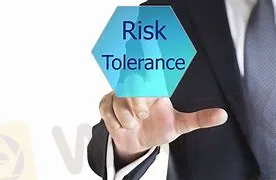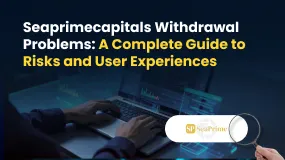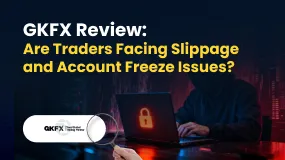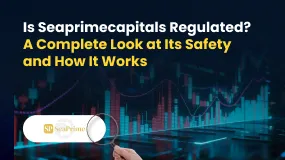简体中文
繁體中文
English
Pусский
日本語
ภาษาไทย
Tiếng Việt
Bahasa Indonesia
Español
हिन्दी
Filippiiniläinen
Français
Deutsch
Português
Türkçe
한국어
العربية
Establishing Your Trading Risk Tolerance
Abstract:So, before we go any further, we need to figure out what our risk tolerance is for trading. It simply refers to the maximum amount of risk you are willing to take on per deal. It differs from money management in that money management focuses on the capacity to suffer a succession of losses, whereas risk tolerance focuses on the ability to survive a single loss.

In trading, what is risk tolerance?
So, before we go any further, we need to figure out what our risk tolerance is for trading. It simply refers to the maximum amount of risk you are willing to take on per deal. It differs from money management in that money management focuses on the capacity to suffer a succession of losses, whereas risk tolerance focuses on the ability to survive a single loss.
What I mean is that some traders are perfectly content to risk 3% on a trade, while others prefer to risk 0.5 percent on the identical set up. Overall, it's a bit of a personal matter, because each person and trader is unique. Knowing your risk tolerance, on the other hand, will be critical to your performance, as if you are not comfortable in a position, you may find yourself departing much too soon. What's more, a lot of the time when you're in that situation, your original analysis may be true, but you'll find yourself leaping out of the market based on fear rather than anything substantive. There are few things more frustrating than seeing a situation turn in your favor after you've been spooked a little.
How Do You Know What Your Risk Tolerance Is?
It's considerably easier than you would think to figure out your risk tolerance. To begin, bear in mind that knowing money management is critical, therefore I'll give you a few of actual examples:
Let's imagine you place a position and put 1% of your whole account at risk on the stop loss. If you feel completely at ease in this situation, you know you're well inside your risk tolerance. Getting up and walking away from the computer is a simple workout. Continue on with your day and see whether you are unduly anxious with how the position is doing. You are most likely inside your risk tolerance if you can go to work, the park, or spend time with your family or friends without constantly monitoring the position.
Perhaps you'll take a 2% risk in another trade. In this situation, you become increasingly concerned about the deal and inquire about its progress on a regular basis. It's over your risk tolerance if it's giving you stress. That's all there is to it. I can't tell you how many times I've found myself trading over my risk tolerance, had a deal go against me, and then turned around to get out at breakeven simply to get rid of the unpleasant sensation. Naturally, the transaction continues to favor me, and I would have made a tidy profit. The psychological tension might have a significant impact on the outcome of the deal.

Measure Your Risk Tolerance With This Exercise
I'll conclude with a little exercise. On the stop loss, make a transaction with a total risk of 0.5 percent. As you step away from the computer, take note of how you're feeling and let the market take its course. If you don't mind, the following transaction should be 0.75 percent using the same settings and observations. From there, just add 0.25 percent each time you conduct a trade until it becomes impossible to leave the market alone.
Some people are willing to take risks with huge sums of money, such as 20%. When it comes to money management, that's an entirely different topic. Money management indicates that you should not take such a large financial risk, but at the end of the day, finding a suitable range in which you can let the trade alone to figure out which way it will go in is one of the most important stages toward becoming a lot more professional trader. For what it's worth, I've discovered that my risk tolerance is around 1%. Yours may be different, but those sorts of trades may compound into excellent profits over time.

Disclaimer:
The views in this article only represent the author's personal views, and do not constitute investment advice on this platform. This platform does not guarantee the accuracy, completeness and timeliness of the information in the article, and will not be liable for any loss caused by the use of or reliance on the information in the article.
Read more

Seaprimecapitals Withdrawal Problems: A Complete Guide to Risks and User Experiences
Worries about Seaprimecapitals withdrawal problems and possible Seaprimecapitals withdrawal delay are important for any trader. Being able to get your money quickly and reliably is the foundation of trust between a trader and their broker. When questions come up about this basic process, it's important to look into what's causing them. This guide will tackle these concerns head-on, giving you a clear, fact-based look at Seaprimecapitals' withdrawal processes, user experiences, and trading conditions. Most importantly, we'll connect these real-world issues to the single most important factor behind them: whether the broker is properly regulated. Understanding this connection is key to figuring out the real risk to your capital and making a smart decision.

Seacrest Markets Exposed: Are You Facing Payout Denials and Spread Issues with This Prop Firm?
Seacrest Markets has garnered wrath from traders owing to a variety of reasons, including payout denials for traders winning trading challenges, high slippage causing losses, the lack of response from the customer support official to address withdrawal issues, and more. Irritated by these trading inefficiencies, a lot of traders have given a negative review of Seacrest Markets prop firm. In this article, we have shared some of them. Take a look!

GKFX Review: Are Traders Facing Slippage and Account Freeze Issues?
Witnessing capital losses despite tall investment return assurances by GKFX officials? Do these officials sound too difficult for you to judge, whether they offer real or fake advice? Do you encounter slippage issues causing a profit reduction on the GKFX login? Is account freezing usual at GKFX? Does the United Kingdom-based forex broker prevent you from accessing withdrawals? You are not alone! In this GKFX review guide, we have shared the complaints. Take a look!

Is Seaprimecapitals Regulated? A Complete Look at Its Safety and How It Works
The straightforward answer to this important question is no. Seaprimecapitals works as a broker without proper regulation. This fact is the most important thing any trader needs to know, because it creates serious risks for your capital and how safely the company operates. While this broker offers some good features, like the popular MetaTrader 5 platform and a low starting deposit, these benefits cannot make up for the major risks that come from having no real financial supervision. This article will give you a detailed, fact-based look at Seaprimecapitals regulation, what the company claims to do, the services it provides, and the clear differences between official information and user reviews. Our purpose is to give you the information you need to make a smart decision about the risks and benefits of working with this company.
WikiFX Broker
Latest News
Interactive Brokers Expands Access to Taipei Exchange
Simulated Trading Competition Experience Sharing
WinproFx Regulation: A Complete Guide to Its Licensing and Safety for Traders
Axi Review: A Data-Driven Analysis for Experienced Traders
INZO Regulation and Risk Assessment: A Data-Driven Analysis for Traders
Pepperstone CEO: “Taking Down Scam Sites Almost Every Day” Becomes “Depressing Daily Business”
The CMIA Capital Partners Scam That Cost a Remisier Almost Half a Million
Is Seaprimecapitals Regulated? A Complete Look at Its Safety and How It Works
eToro Cash ISA Launch Shakes UK Savings Market
Cleveland Fed's Hammack supports keeping rates around current 'barely restrictive' level
Currency Calculator



